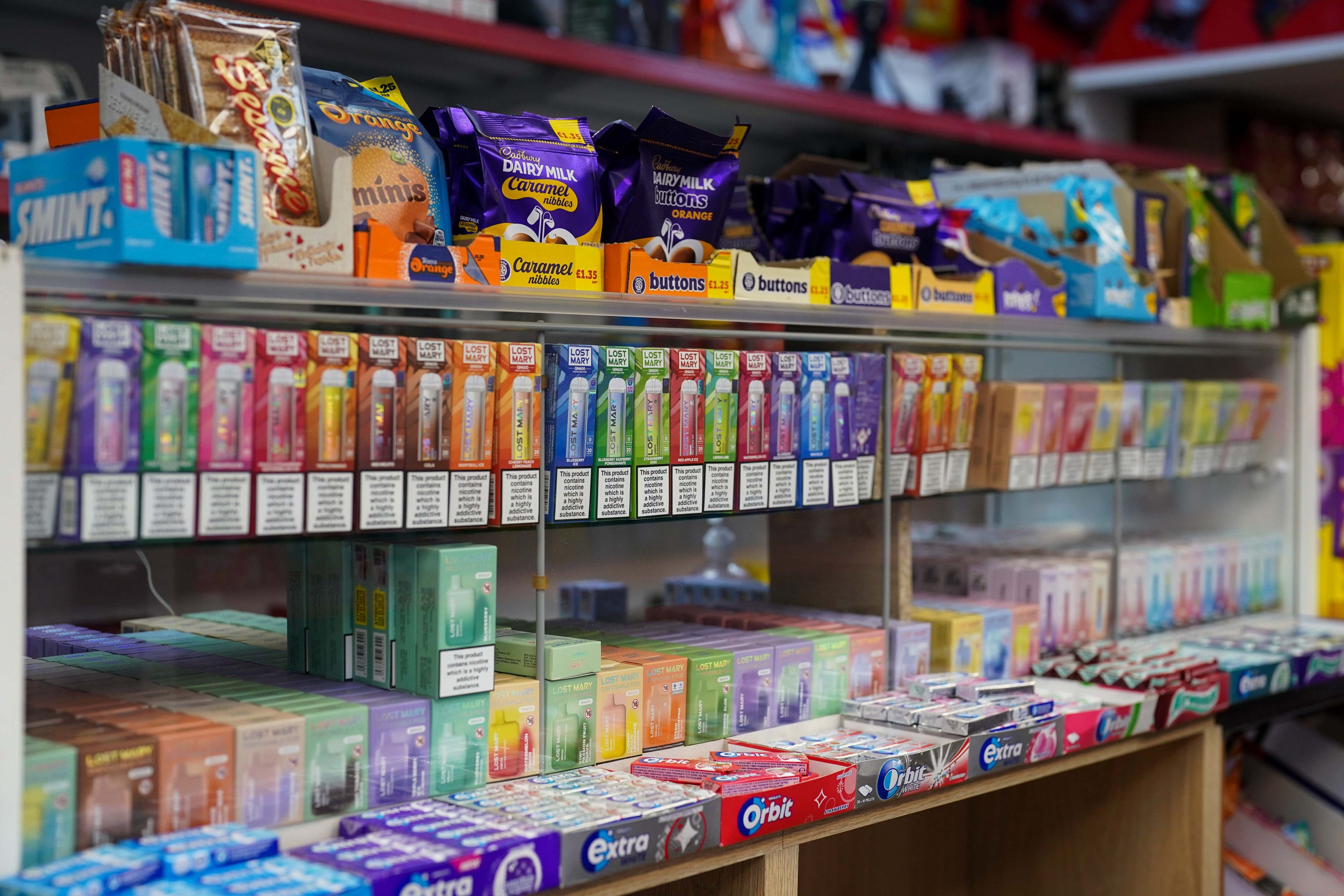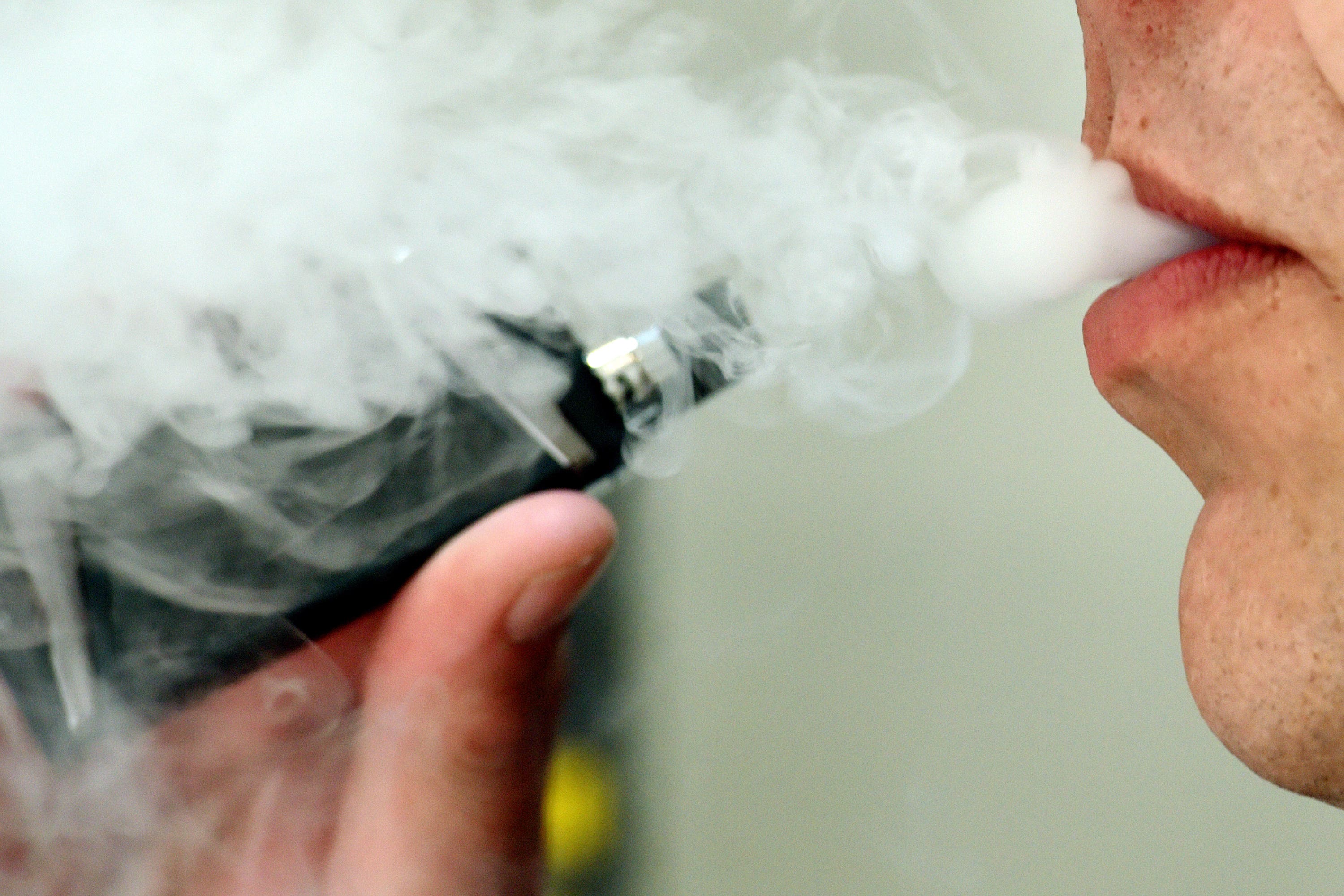
Youngsters who spend a lot of time on social media are more likely to vape and smoke cigarettes, research suggests.
Children and young people on social media more than seven hours a day are eight times more likely to smoke than non-users, and four times more likely to vape.
The researchers said companies that own social media platforms have “substantial power” to change how young people are exposed to smoking and vaping.
The UK Household Longitudinal Study 2015–2021 included data for 10,808 people aged 10 to 25 and the results have been published in the journal Thorax.
In total, just over 8.5 per cent reported current cigarette smoking, while 2.5 per cent reported current vaping. Just over 1 per cent used both.
Analysis showed that 2 per cent of those who said they did not use social media reported current cigarette smoking, compared with 9.2 per cent who used social media for one to three hours a day per weekday. This rose to 12.2 per cent of people smoking who used social media for four to six hours a day and 15.7 per cent for those who spent seven or more hours per weekday on it.
Just 0.8 per cent of those not using social media vaped, rising to 2.4 per cent among those using it for one to three hours a day per weekday. This rose again to 3.8 per cent for those using social media four to six hours a day and 4 per cent for those using social media for more than seven hours a day.

The researchers, including from Imperial College London School of Public Health, said there was “compelling evidence that vape companies are using social media to market their products”.
“Social media may be driving cigarette smoking and e-cigarette use through both direct, targeted advertisements and the use of paid influencers by the tobacco industry,” they wrote, adding: “Voluntary codes seem unlikely to achieve this, and the introduction and enforcement on bans on material that promote this should be considered.”
Dr Amrit Kaur Purba, postdoctoral researcher at the Oxford Internet Institute, said the study is a “significant contribution” to the ongoing debate and “sheds light on the potential link between social media use and young people’s engagement in cigarette, e-cigarette, and dual use”.
However, she said to fully understand the relationship between smoking or vaping and social media use, a broader look at individual characteristics such as risk-taking and parenting styles would influence the link between social media use, cigarette, e-cigarette and dual use.
He said: “Future research endeavours should meticulously and transparently address these complexities and prioritise securing more accurate objective social media measures to unravel the true nature of any potential causal relationship between specific aspects of social media use, such as exposure to nicotine-related products, and youth cigarette, e-cigarette, and dual use.”

Dr Graham Wheeler, honorary senior lecturer at the Imperial Clinical Trials Unit, Imperial College London, and statistics director for statistical innovation in specialty and primary care at GSK, flagged that the research did not look at whether the association between social media use and cigarette or e-cigarette use differed between children of smokers and non-smokers, which was another variable strongly associated with smoking habits.
The findings come after research earlier this week showed children’s exposure to vape marketing is at an all-time high, with youngsters overwhelmingly opting for fruit and dessert-flavoured vapes.
Annual survey results from Action on Smoking and Health (Ash) found children in Great Britain are increasingly aware of vape marketing, including in shops and via social media sites such as TikTok and YouTube.
The 2024 poll of 2,587 children aged 11 to 17 found that 7.6 per cent currently vape – the same proportion as last year, but up from 2.8 per cent in 2017 and 0.8 per cent in 2013.
Figures showed that in terms of marketing, 29 per cent of 11 to 17-year-olds are aware of vape promotion online. Of those, 52 per cent see vapes promoted on TikTok, up slightly from 49 per cent last year. 32 per cent see them on YouTube, up from 29 per cent.
Hazel Cheeseman, deputy chief executive of Ash, said of the new study: “This new study adds to the evidence that online promotions are contributing to children’s likelihood of trying vaping.
“Young people deserve to be just as well protected in online spaces as they are in physical spaces and Government must look at what can be done to secure this.”
This article was ammended at 10:09 on 17 May to correct a reference to Dr Graham Wheeler’s quote clarifying the research does look at age.







